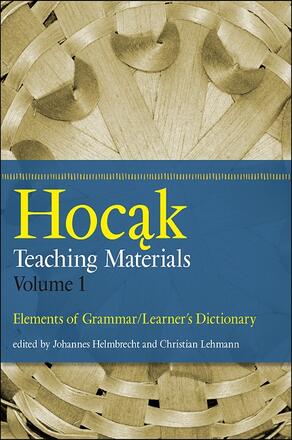
Hocak Teaching Materials, Volume 1
Elements of Grammar/Learner's Dictionary
Alternative formats available from:
Comprehensive bilingual dictionary of the Hochunk language.
Description
This is the most comprehensive bilingual dictionary ever available for the Hochunk (popularly known as the Winnebagos; orthographically rendered as Hocank) language. Living today in two reservation communities in Wisconsin and Nebraska, the Hochunks are wrestling with the widespread challenge of preserving and teaching their original language to new generations. Language revitalization, as at so many other indigenous communities, is intricately connected to cultural sovereignty in the twenty-first century. The compilers have worked very closely with the Hochunk Language Center in Wisconsin to compile and edit this dictionary, a work that is eagerly anticipated and needed by the community.
Also included with this volume is an outline of the basic elements of Hochunk grammar, information that is likewise essential for the future of the original language.